In 2023, soybean gall midge was found infesting soybean and sweet clover in Marshall and Nemaha counties. Washington County was added to the list of soybean gall midge-positive locations in 2024. Since this pest can overwinter in Kansas, producers should be on the lookout for additional infestations in 2025.
The Soybean Gall Midge (Resseliella maxima) was first observed in Nebraska in 2011 but was not officially described as a new species until 2018 when this tiny fly established itself as an emerging pest of soybeans in South Dakota, Nebraska, Minnesota, and Iowa. New infestations have been documented every year since, and its range has expanded into Missouri. Soybean gall midge has been documented in Nebraska along the Kansas border as recently as 2021. This pest should be actively scouted for during the growing season, especially in counties along the Nebraska border.
Losses from soybean gall midge infestation are due to plant death and lodging (Figure 1). Heavily infested fields have shown the potential for complete yield losses from the edge of the field up to 100 feet into the field, and a 20% yield loss from 200 to 400 feet into the field.
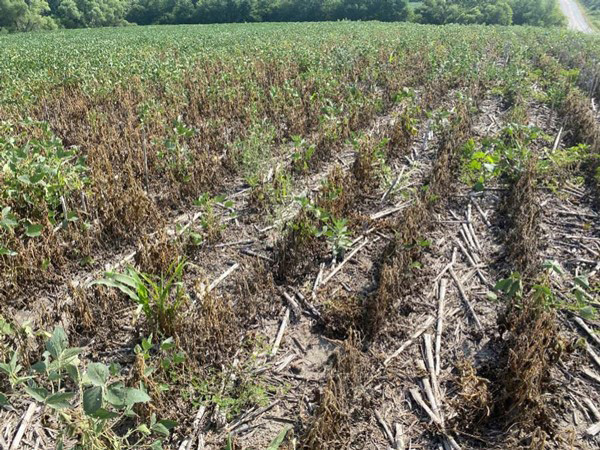
Figure 1. Soybean field with damage from soybean gall midge. Photo by Justin McMechan, Univ. of Nebraska.
Identification and Lifecycle
Adults: tiny (2-3mm), delicate flies with an orange abdomen, slender bodies, and mottled wings. Long legs are banded with alternating light and dark markings (Figure 2).
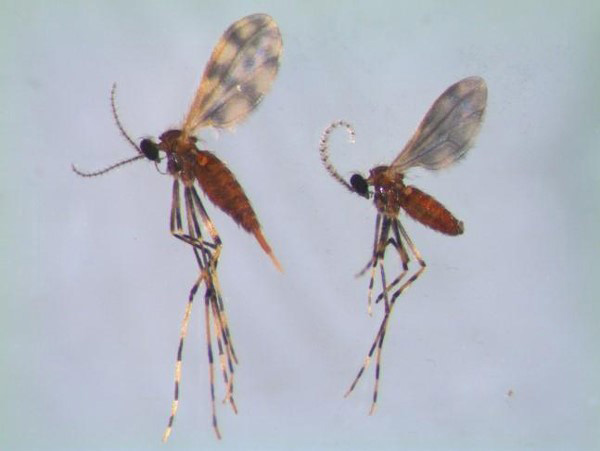
Figure 2. Adult soybean gall midge. Photo by Mitchell Helton, Iowa State Univ.
Larvae: small, legless, maggots that are clear to white-colored when young but turn bright orange when mature (Figure 3).
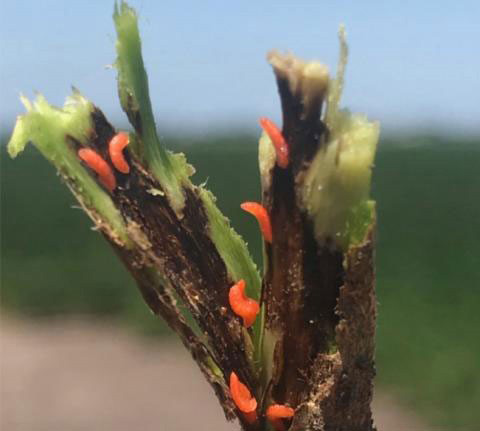
Figure 3. Soybean gall midge larvae. Photo by Justin McMechan, Univ. of Nebraska.
Soybean gall midge overwinters as larvae in the first few inches of soil. After pupation in the early spring, adult midges emerge and lay their eggs on the lower portions of stems or at the base of soybean plants. The eggs hatch, and the larvae feed within the stems. Infestation does not occur until the V2 stage, when natural fissures and cracks appear in stems, allowing entry by larvae. Infestation can continue into the reproductive growth stages. So far, there appear to be at least two generations per growing season. The adult soybean gall midges do not feed on soybeans.
Scouting
Begin scouting soybean plants at the V2 growth stage. Symptoms of infestation include:
- wilting or dead soybeans along field edges with decreasing damage into the center of the field (Figure 4),
- darkening and swelling at the base of stems (Figure 5),
- brittle stems that break easily near their base, and
- small orange larvae are present in split-open stems.
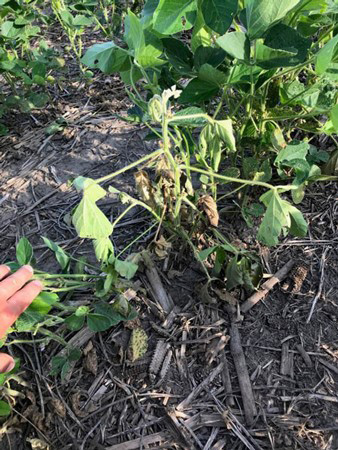
Figure 4. Wilting soybean plant from gall midge infestation. Photo by Justin McMechan, Univ. of Nebraska.
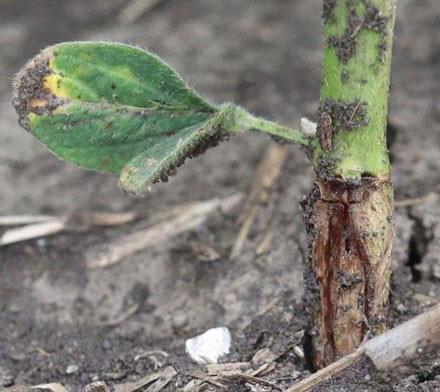
Figure 5. Darkening and swelling of stem. Photo by Adam Varenhorst, South Dakota State Univ.
Management
Effective management recommendations for this relatively new pest continue to be evaluated. On-farm studies in impacted states are examining the effects of various cultural practices and insecticides on preventing losses. Seed treatments have not been shown to be effective.
Please report any occurrence of soybean gall midge to your local extension professional or contact the K-State Entomology Department. The Soybean Gall Midge Alert Network, https://soybeangallmidge.org/, can be used to track developments regarding this pest.
Anthony Zukoff, Extension Entomology, Southwest Research and Extension Center
azukoff@ksu.edu